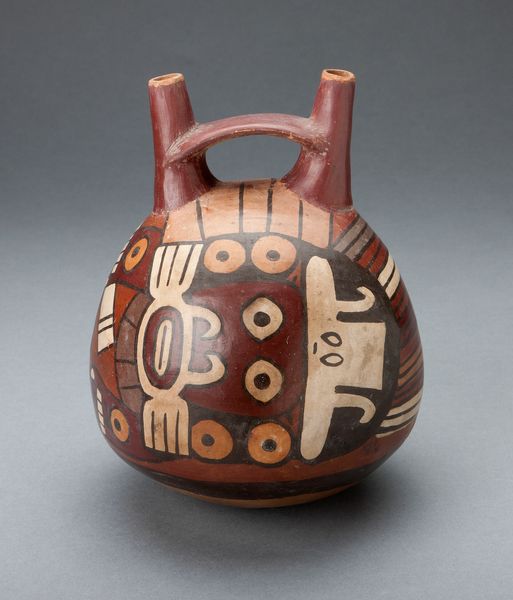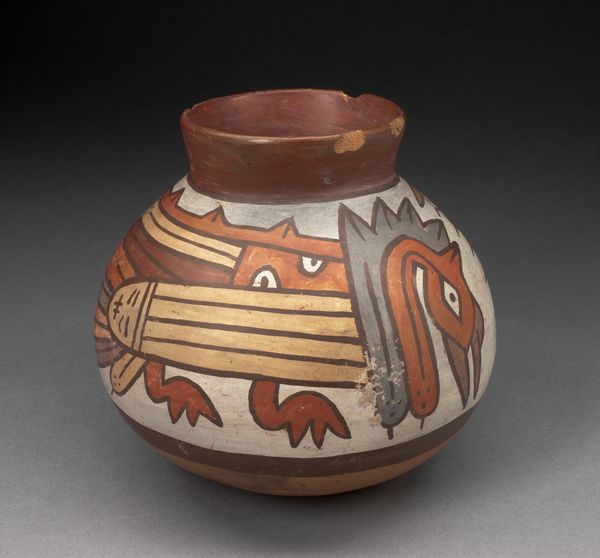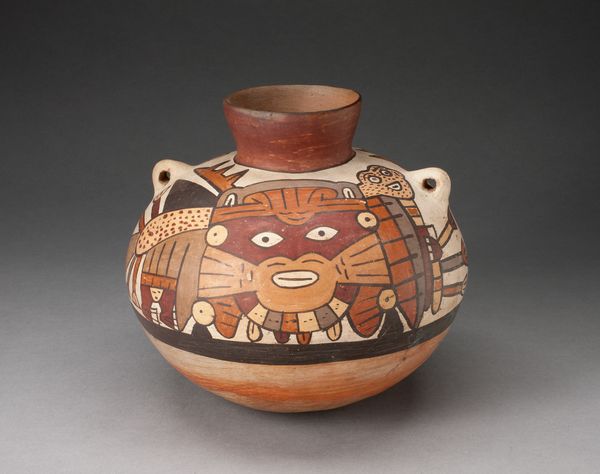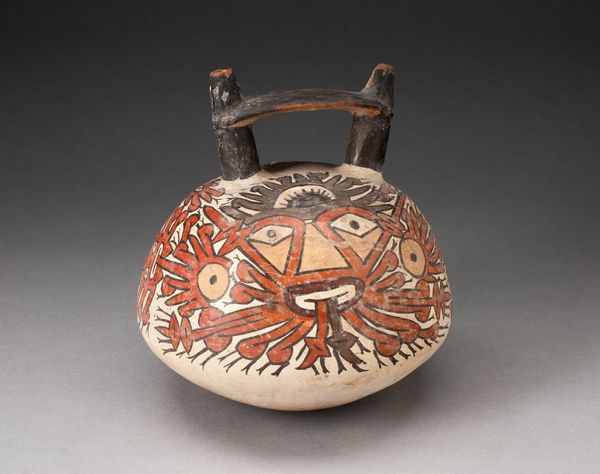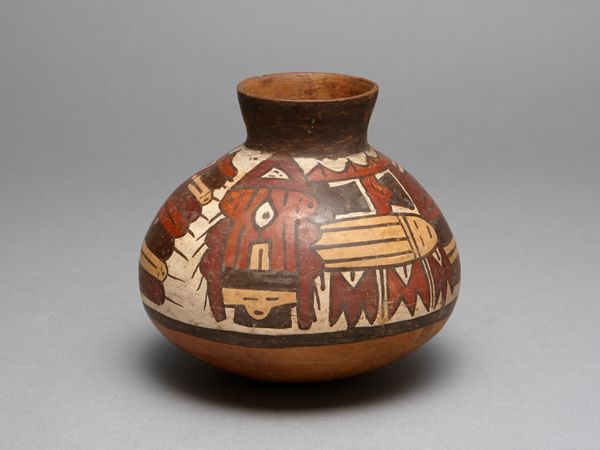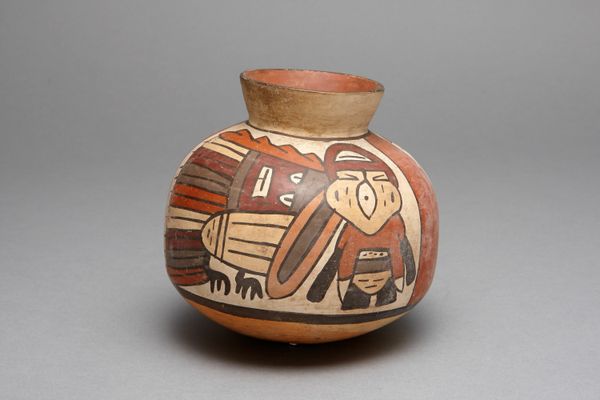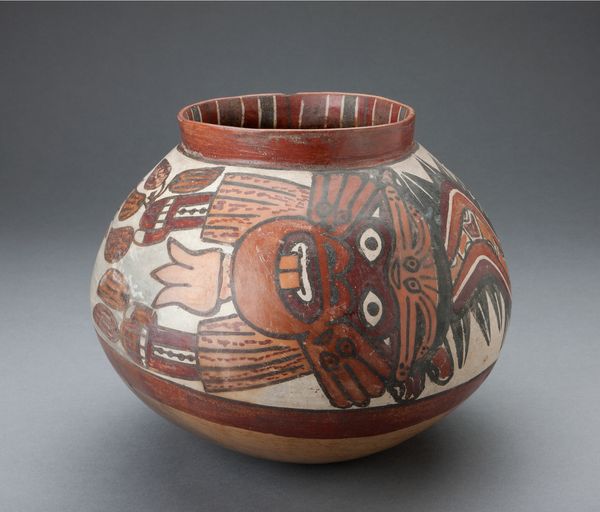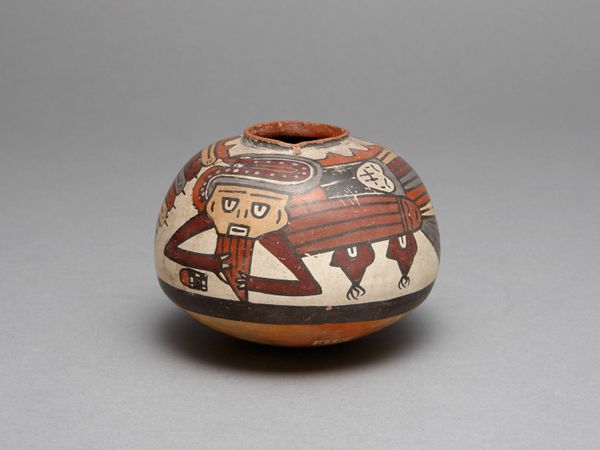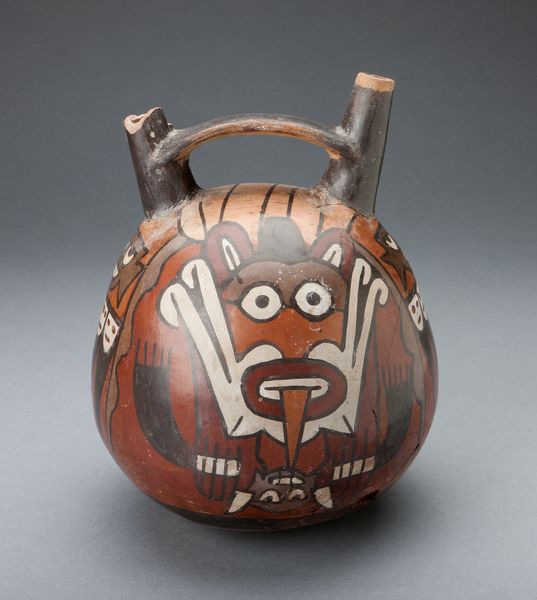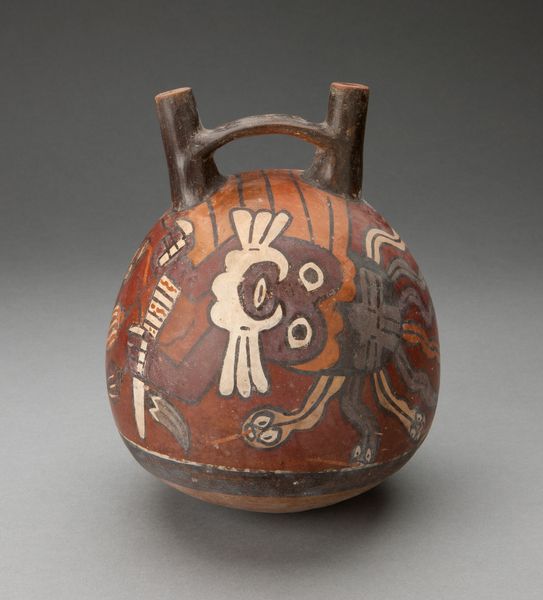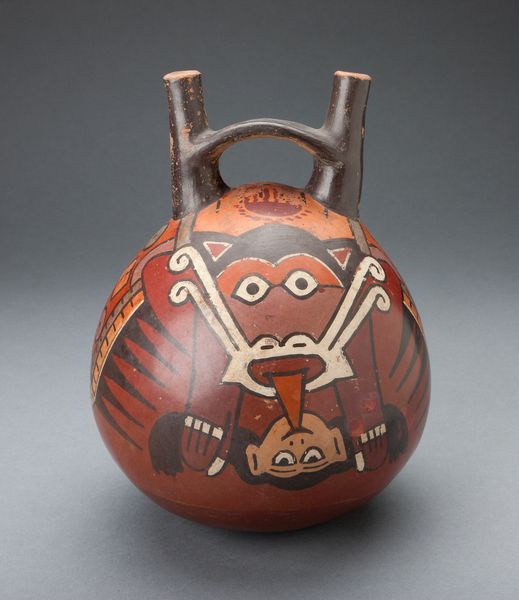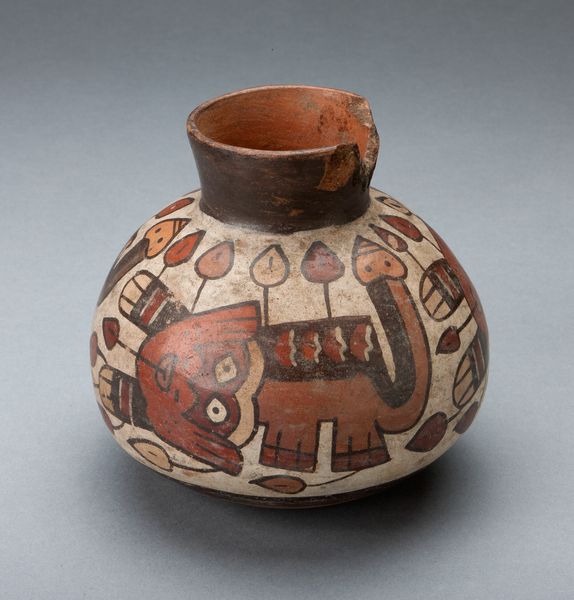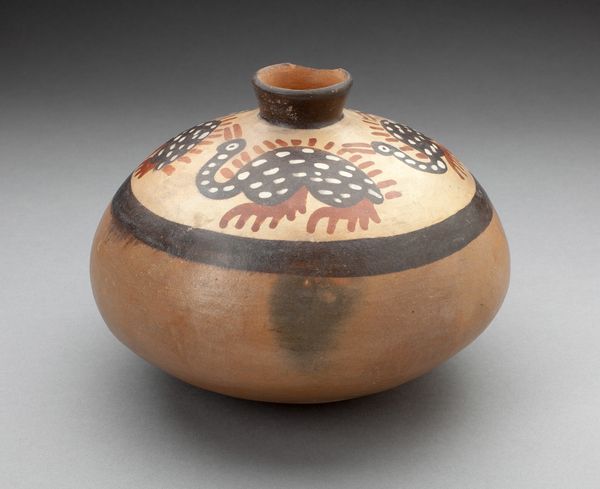
Jar Depicting a Performer Wearing Abstract Bird Costume and Holding a Trophy Head c. 180 - 500
0:00
0:00
ceramic, inorganic-material
#
egg art
#
3d printed part
#
war
#
product fashion photography
#
ceramic
#
jewelry design
#
vessel
#
stoneware
#
wash background
#
inorganic-material
#
latin-american
#
ceramic
#
nostalgic styling
#
watercolour illustration
#
disk design
Dimensions: 12.4 × 14.8 cm (4 7/8 × 5 13/16 in.)
Copyright: Public Domain
Curator: The bold imagery really jumps out at you, doesn't it? Editor: It does! The red is so striking, almost… blood-like against the stark white. A bit unsettling, I must say. Curator: Well, that dramatic visual certainly echoes something of the vessel’s original cultural context. We’re looking at a ceramic jar, dating roughly from 180 to 500 CE, crafted by the Nazca people of ancient Peru. Here in the Art Institute of Chicago, it’s known as "Jar Depicting a Performer Wearing Abstract Bird Costume and Holding a Trophy Head." Editor: Trophy head? Goodness. It's less abstract than I initially thought. The bird costume gives it a ceremonial vibe, almost like a shamanistic ritual. Is the…performer… displaying power, or appeasing some deity? Curator: That's precisely the kind of multi-layered interpretation the Nazca imagery invites. Birds in their culture often symbolized connection to the spiritual world, acting as messengers between realms. The ‘performer’ is thus adorned in a feathered cloak, potentially embodying the power of the avian spirit. Editor: And that power is further linked to the trophy head… Was this related to warfare and ritual sacrifice, or did it carry some other symbolic weight? I'm thinking about social structures and power dynamics... Curator: The practice of taking trophy heads was indeed part of Nazca warfare, yes. It wasn’t only about conquest; it was deeply ritualistic. Decapitation stripped the defeated warrior of his life force, while capturing his head transferred that power to the victor. So, you have this complex exchange happening: victory, ritual, and symbolic inheritance, all rolled into one rather macabre act. Editor: The ceramic medium also lends to that air of permanence, doesn’t it? It’s as though the Nazca intended for this to last and speak across centuries… Does the image mean different things now? How do museum settings and contemporary viewers affect its symbolism? Curator: I think displaying it shifts the focus towards contemplating cultural memory. As an object isolated in a museum, divorced from its active ritual role, the jar encourages us to question how we project our own meanings onto ancient artifacts. Are we glorifying violence, or merely attempting to comprehend a world drastically different from our own? That dialogue with history is key, isn't it? Editor: Indeed, understanding our perspective is key. The stark imagery initially repelled me. Now, I feel challenged by what it represents, forced to think about power, representation, and cultural otherness. Curator: Absolutely. That visceral impact, coupled with historical understanding—that's when the artwork truly sparks those vital conversations.
Comments
No comments
Be the first to comment and join the conversation on the ultimate creative platform.
